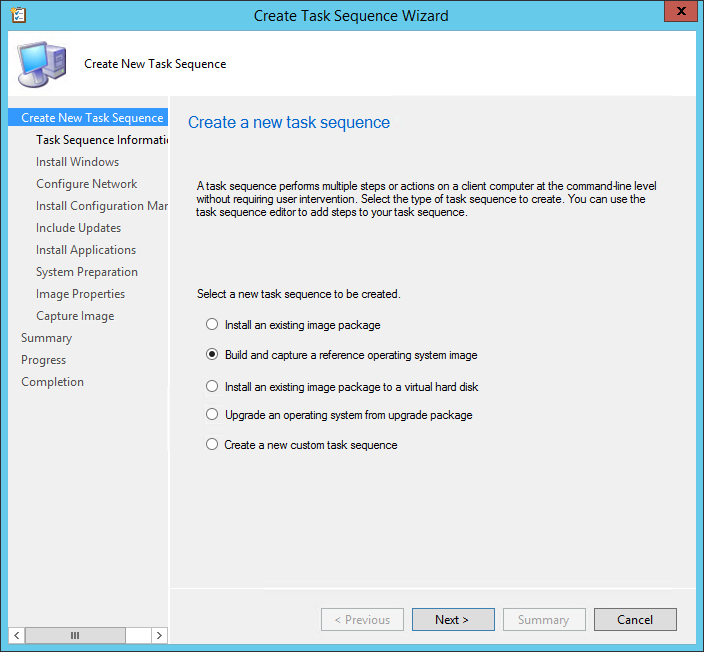

In the third post of this blog series about Windows 10 Deployment using SCCM, we will show you how to create a SCCM Windows 10 Build and Capture Task Sequence and deploy it. Complete the preparation of your environment before reading this post. You will be able to edit this task sequence later to customize it to your environment.
The goal of a build and capture task sequence is to capture a reference machine OS in order to redeploy its configuration multiple time. As a best practice, we recommend not to add too much software and customization to your reference image. Rather, use the task sequence steps to customize your deployment which decrease management operation tasks in the long run.
For example, if you want to include Adobe Reader to your reference image because all your users need it, do not install it on your reference machine and do your capture. Instead, use the Installed Software step in the capture task sequence. When a new version of Adobe Reader will be released, it will be a matter of a couple of click to replace the old version with the new one.
Create SCCM Windows 10 Build and Capture Task Sequence
- Open the SCCM Console
- Go to Software Library \ Operating Systems \ Task Sequences
- Right-click Task Sequences and select Build and capture a reference operating system image

- On the Task Sequence Information tab enter a task sequence Name and Description
- Select the desired boot image
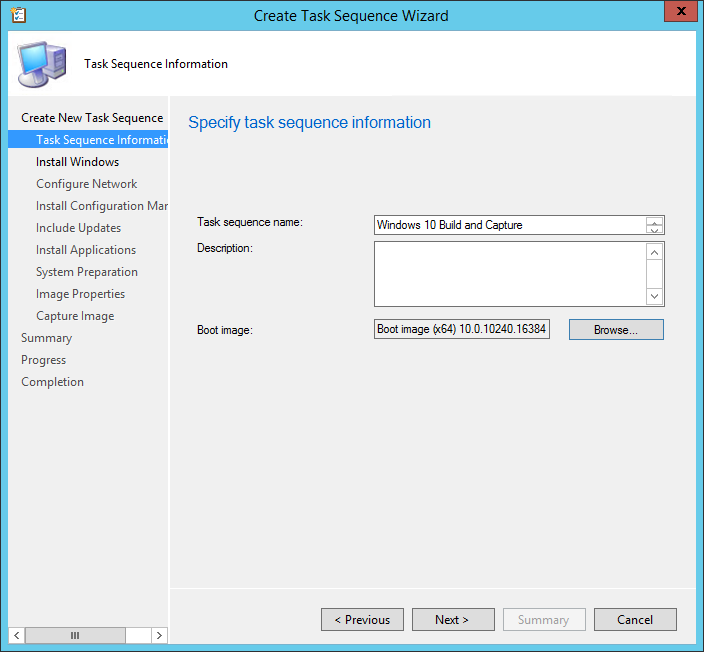
- On the Install Windows pane, select the Image package and Image index you imported in part 1
- Leave the Product key blank, if you are using MAK keys, read this post on how to handle that in your Task Sequence. (Hint : Even with MAK key, you need to leave the Product key blank)
- Enter a password for the local Administrator account
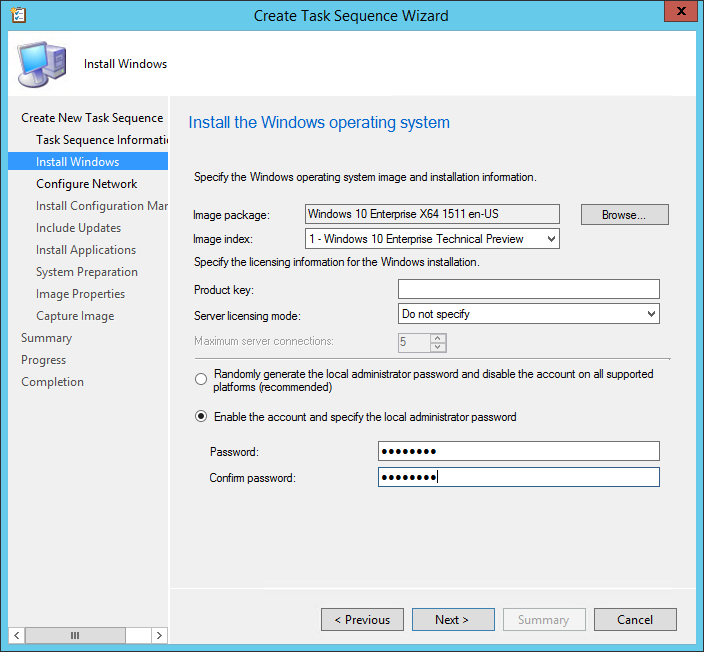
- In the Configure Network pane, select to Join a workgroup. There’s no reason to join a domain when creating a build and capture task sequence. You’ll still be able to join a domain when creating a task sequence to deploy this image
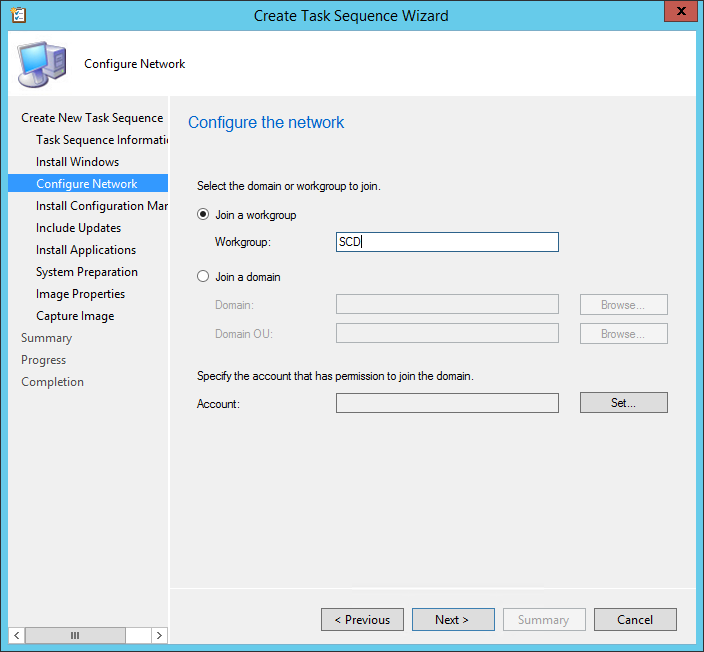
- On the Install Configuration Manager Client pane, select your Configuration Manager Client Package and enter your installation properties
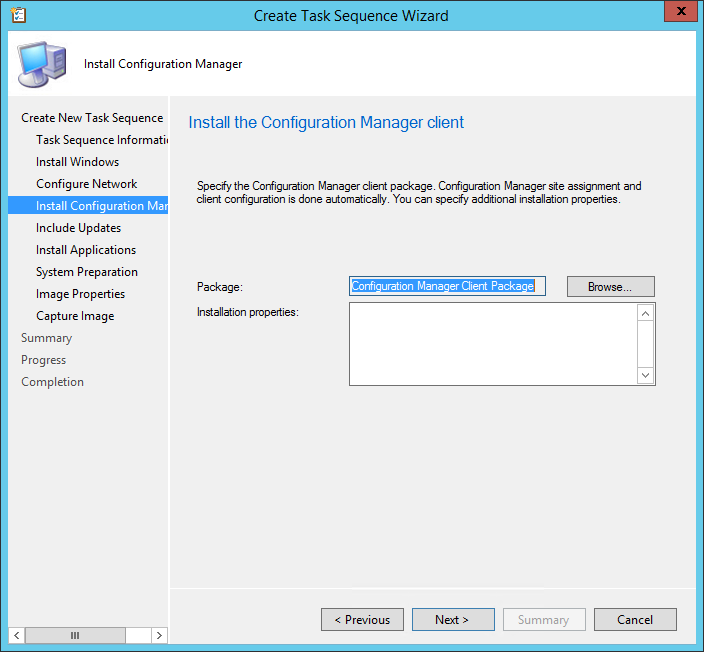
- On the Include Updates pane, select the desired Software Update task
- All Software Updates will install the updates regardless of whether there is a deadline set on the deployment (on your OSD collection)
- Mandatory Software Updates will only install updates from deployments that have a scheduled deadline (on your OSD collection)
- Do not install any software updates will not install any software update during the Task Sequence
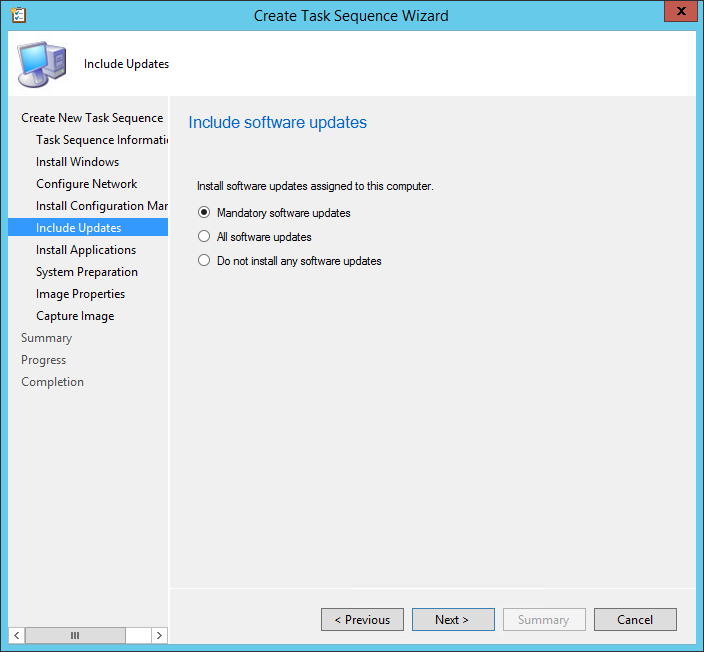
- On the Install Applications tab, click on the Star Icon to add any application that you want to be installed during your build and capture deployment. These applications will be part of the reference image, we recommended adding only software that need to be included in every deployment… and even there, I prefer add it to a deployment task sequence rather to include it in my image. The reason is pretty simple, if you need to make an application change, you only have 1 step to change to your task sequence rather than redo the whole build and capture process and then modify your task sequence with the new image. Some likes to add Office or other big applications that every users needs to reduce deployment time.
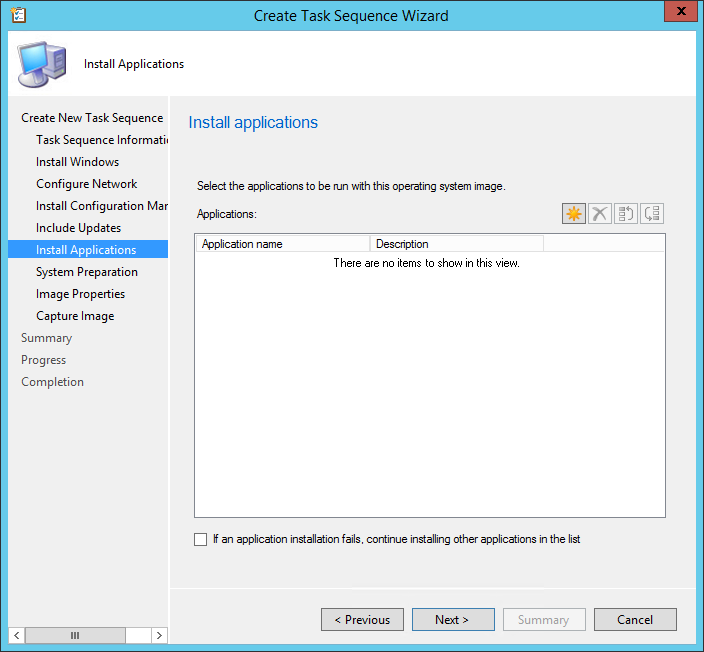
- On the System Preparation tab, click Next
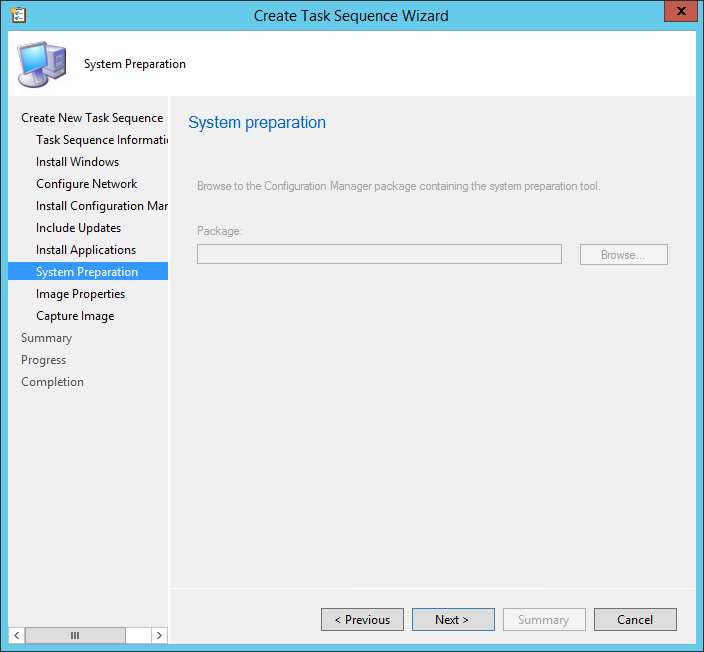
- On the Image Properties tab, enter the desired information
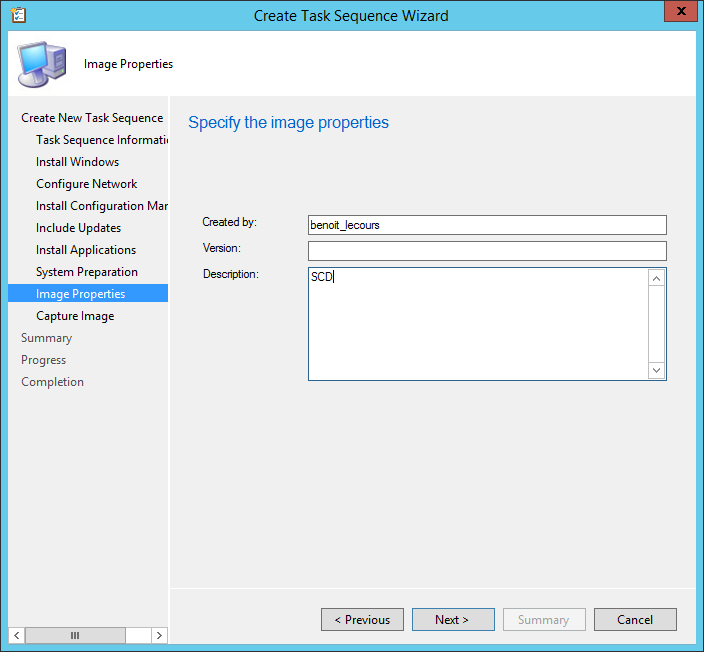
- On the Capture Image tab, select the path where you want to save the .WIM file
- Enter the account to access the folder. This account needs write permission
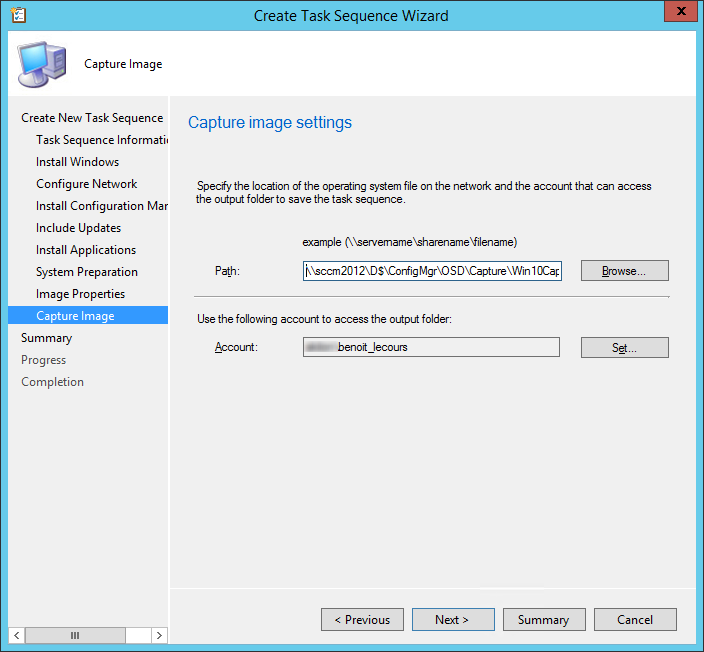
- On the Summary tab, review your choices and complete the wizard
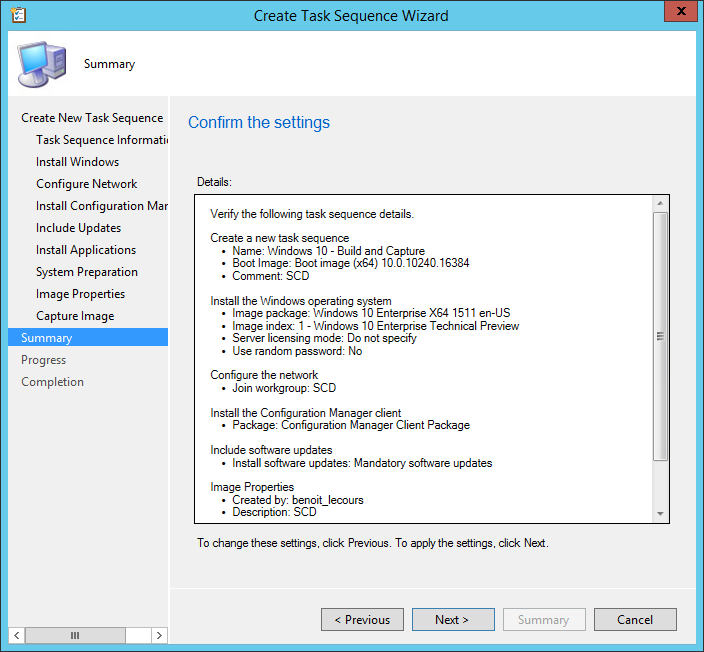
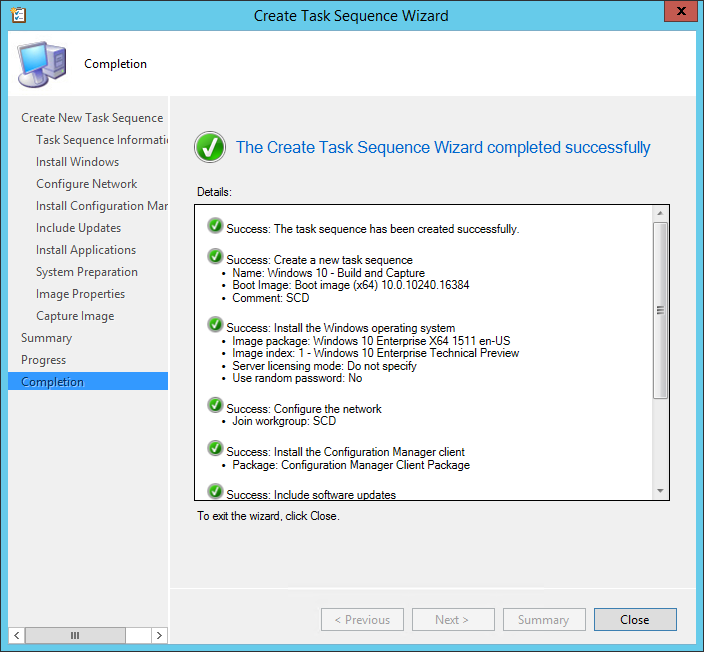
Deploy Windows 10 Build and Capture Task Sequence
Now that our Task Sequence is created, we will deploy it to a collection and start a Windows 10 Build and capture. It’s strongly recommended to deploy a build and capture on a virtual machine.
Be careful when targeting the deployment. This task sequence will format and install a new OS to targeted devices.
- Open the SCCM Console
- Go to Software Library \ Operating Systems \ Task Sequences
- Right-click your Windows 10 Build and Capture Task Sequence and select Deploy
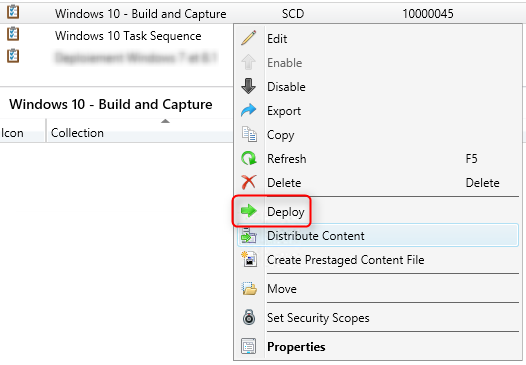
- On the General pane, select your build and capture collection. This is the collection that will receive the Windows 10 installation and be captured to create the new WIM file
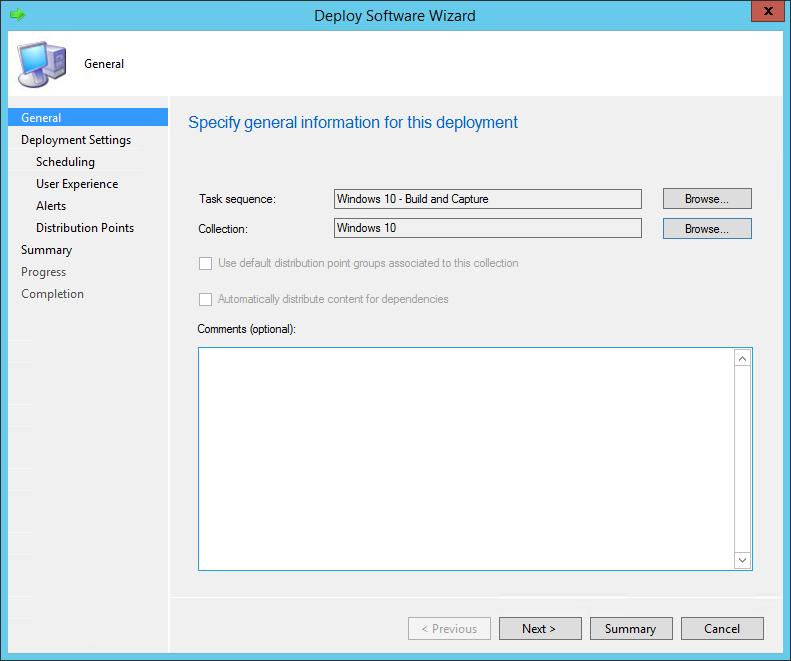
- Select the Purpose of the deployment
- Available will prompt the user to install at the desired time
- Required will force the deployment at the deadline (see Scheduling)
- In the Make available to the following drop down, select the Only media and PXE. This will ensure that you do not send the deployment on clients. This is also useful to avoid errors, using this options you *could* send the deployment to All Systems and no clients would be able to run the deployment from Windows
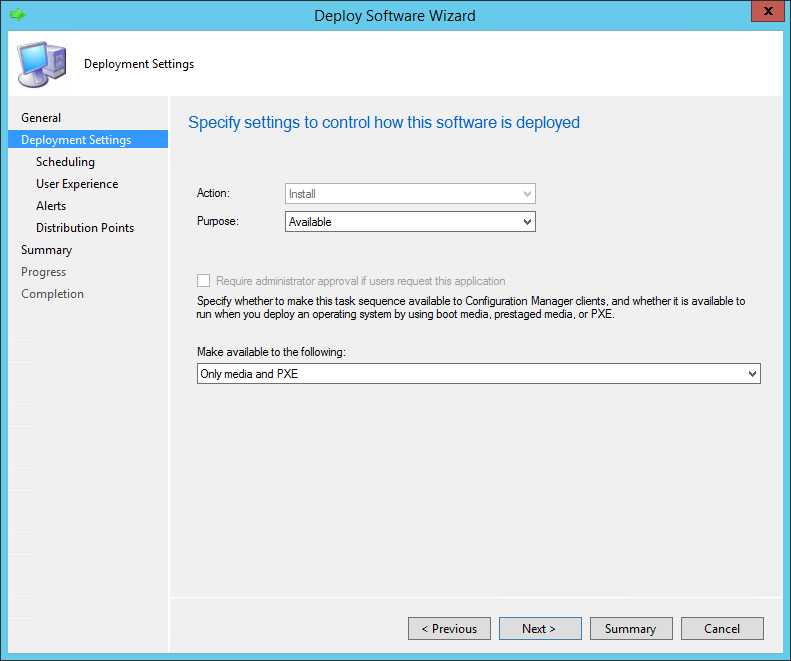
- On the Scheduling tab, enter the desired available date and time. On the screenshot, we can’t create an Assignment schedule because we select Available in the previous screen
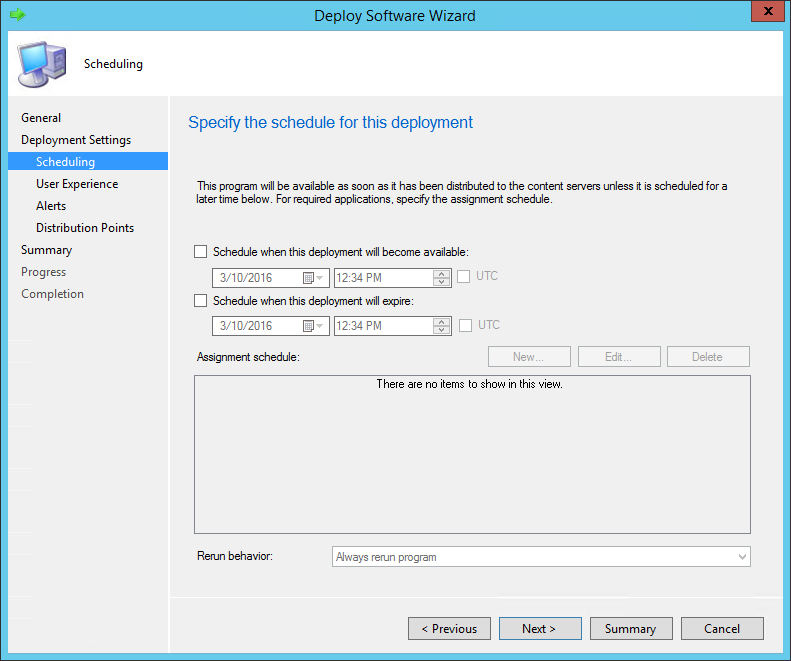
- In the User Experience pane, select the desired options
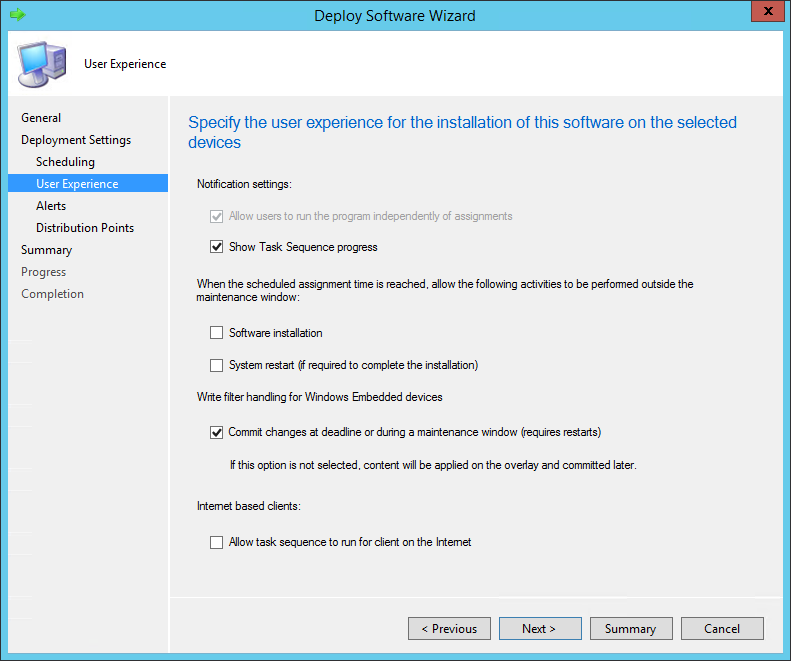
- In the Alerts tab, check Create a deployment alert when the threshold is higher than the following checkbox if you want to create an alert on the failures
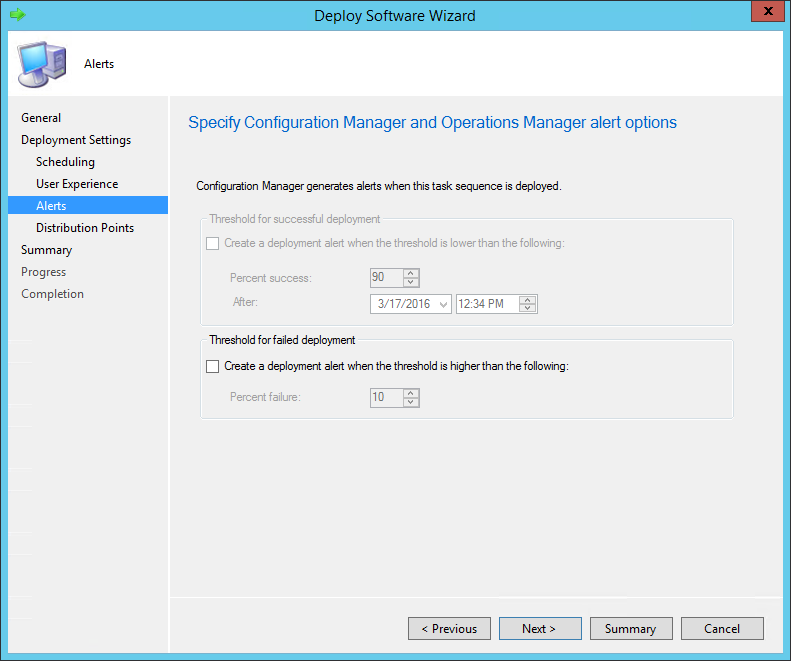
- On the Distribution Point pane, select the desired Deployment options. We will leave the default options
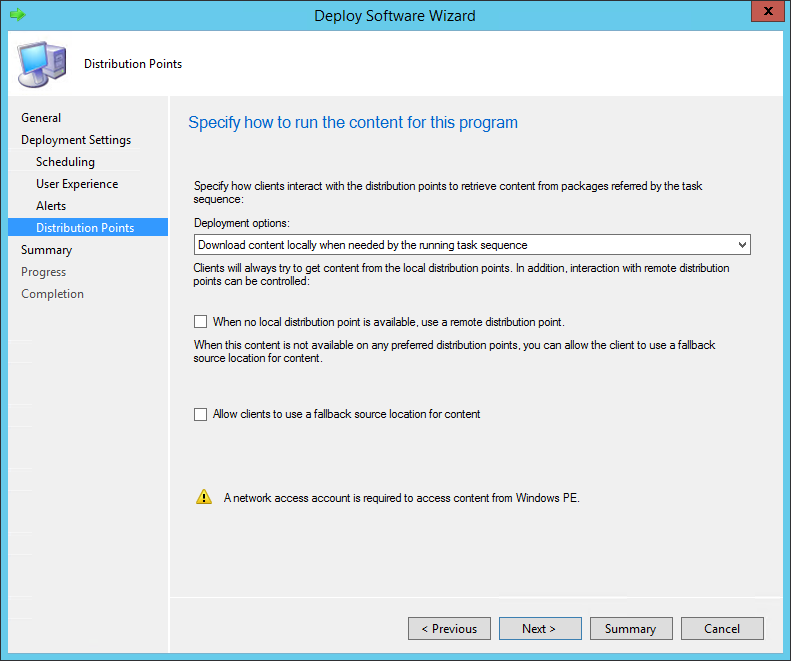
- Review the selected options and complete the wizard
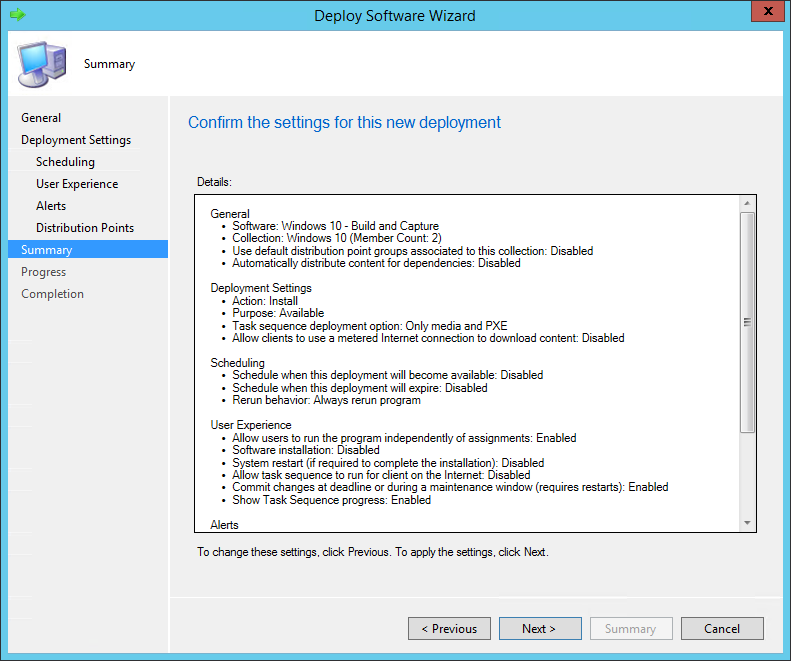
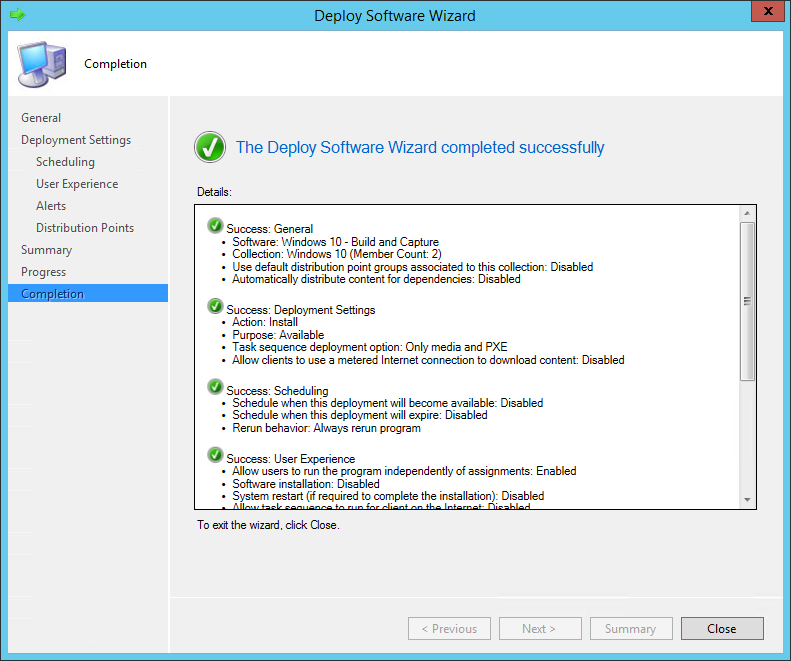
PXE Boot
Now that we’ve created our task sequence and that it’s deployed. We can start the deployment on the machine. Make sure that the system you want to capture is a member of your deployment collection and start the device. (See this Technet article to know how to import a computer).
For this example, we will be using a virtual machine running on Hyper-V.
- The machine is booting and waiting for the PXE to respond
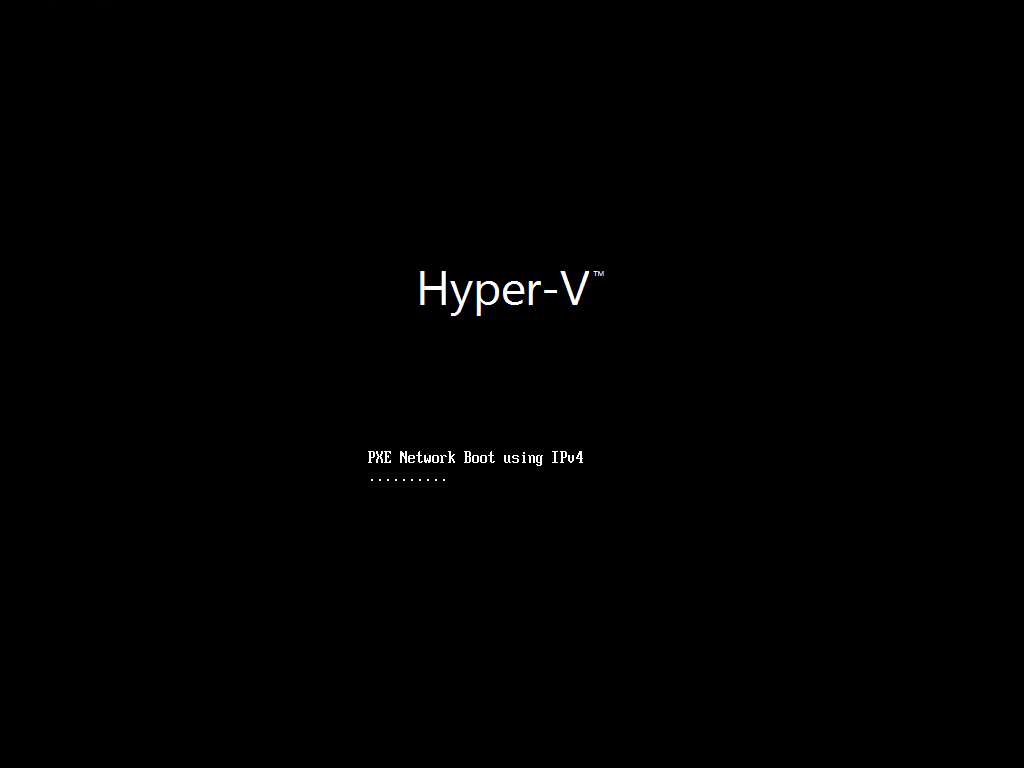
- Our SCCM Distribution point is sending the boot image to our VM
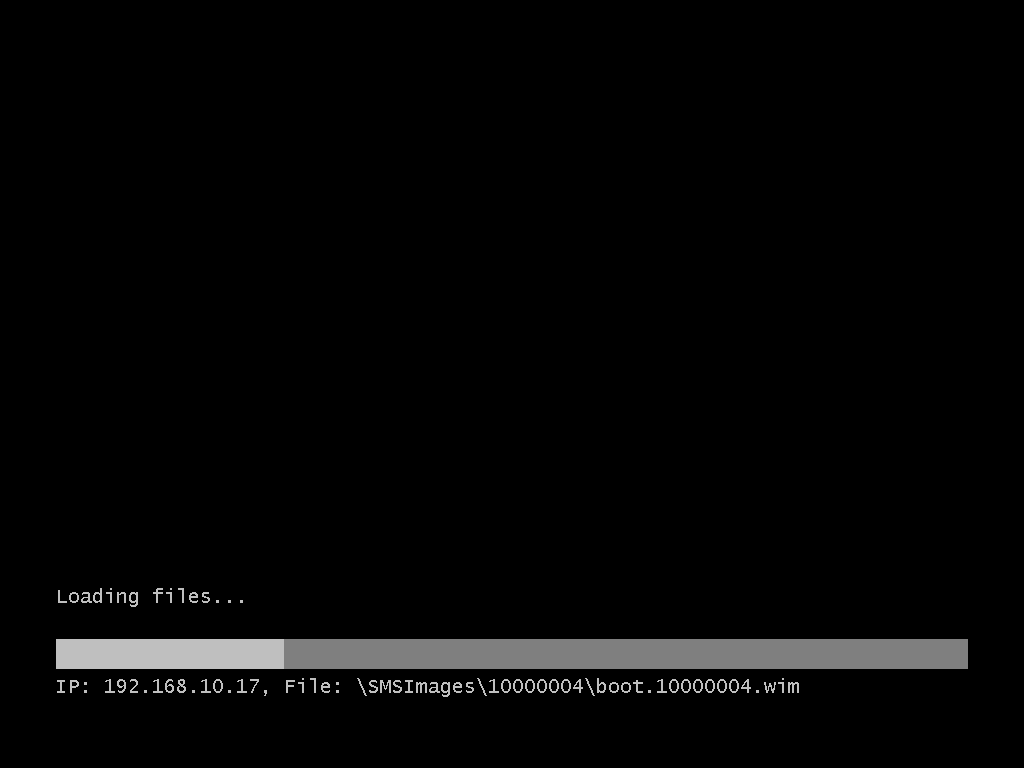
- The Welcome to the Task Sequence Wizard pops-up. This is because of the Available purpose in the Deployment Settings. If we had a Required deployment, the task sequence would start right away. Click Next
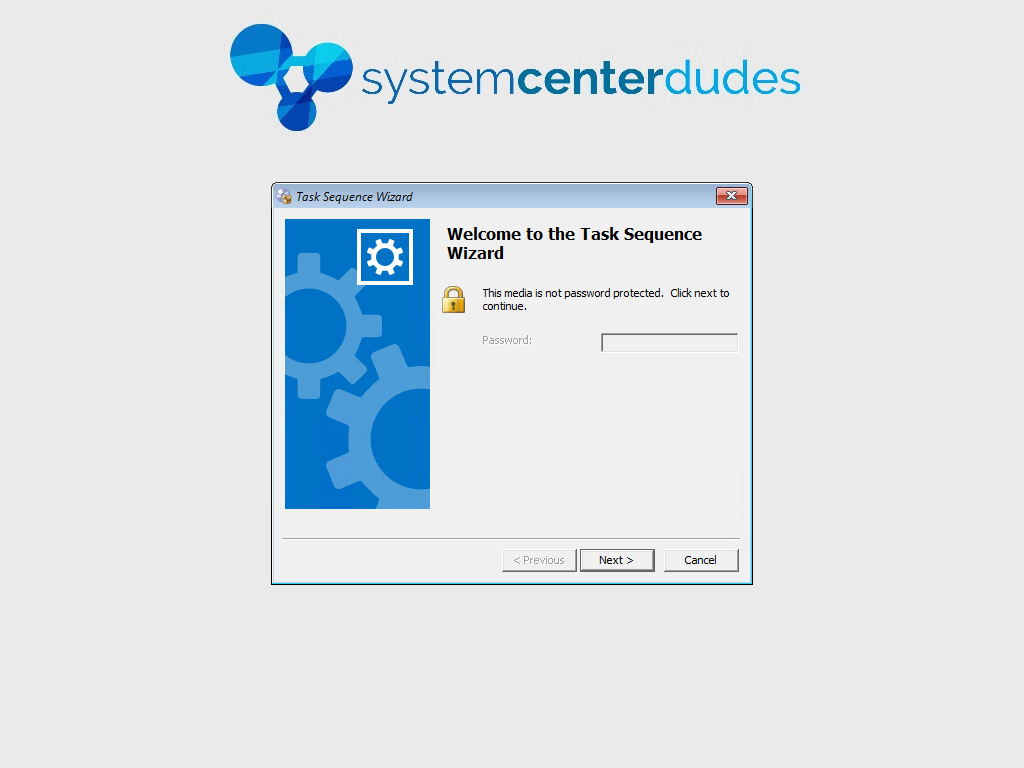
- All the available task sequence are listed. In our example we have our deployment and our build and capture task sequence. Select the Build and Capture task sequence and click Next
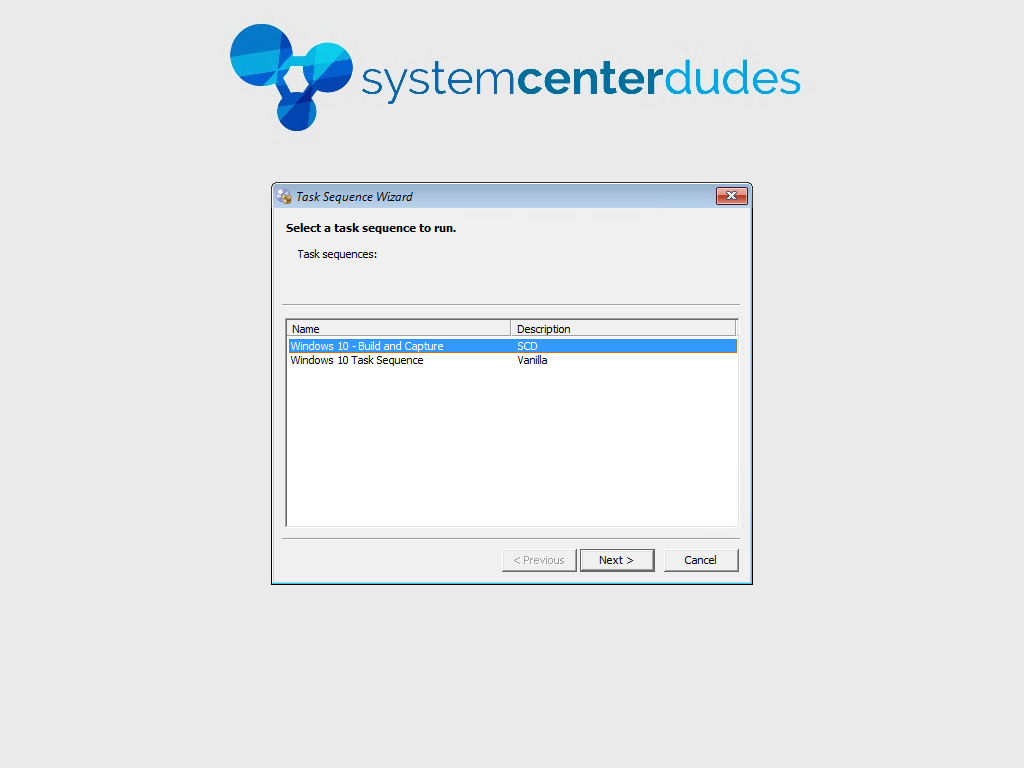
- The Task Sequence starts
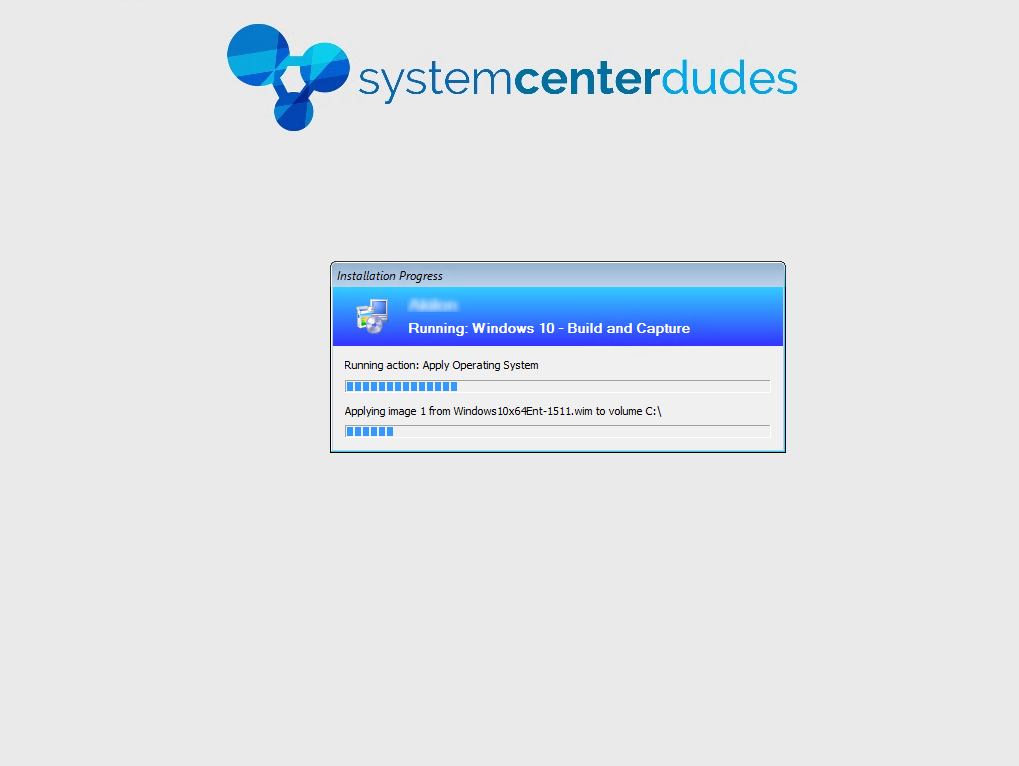
Monitoring
See our blog post on this topic which covers the various ways to monitor your task sequence progress.
















Dave Smith
03.23.2020 AT 12:39 PMKeith Moore
06.26.2019 AT 07:36 AMSeth
03.05.2019 AT 06:41 PMHarry
01.14.2019 AT 10:53 AMYodelling Joe
08.06.2018 AT 02:32 AMBergen
07.11.2018 AT 10:11 AMDrew
01.02.2018 AT 12:06 PMArshad
10.17.2017 AT 08:10 AMAndrew
10.02.2017 AT 03:28 AMWiiliam jovel
08.06.2017 AT 09:55 AMJonathan Lefebvre
08.06.2017 AT 07:42 PMLee
12.07.2016 AT 04:21 PMJames
07.31.2017 AT 05:00 AMStaceland
10.03.2016 AT 08:57 AMJack
09.16.2016 AT 03:48 PMLAPaone
12.09.2018 AT 07:05 PMhonda vs toyota reliability
04.11.2017 AT 05:04 PMhotel bauen kredit
02.12.2017 AT 12:24 PMBenoit Lecours
09.20.2016 AT 01:01 PMbishop
09.07.2016 AT 10:53 AMJonathan Lefebvre
09.18.2016 AT 07:49 AMCurt
06.28.2016 AT 08:39 AMJackr
04.05.2016 AT 06:04 PMBenoit Lecours
04.06.2016 AT 11:28 AMjackr
04.15.2016 AT 11:27 AMjackr
04.06.2016 AT 01:15 PMChris
03.30.2016 AT 02:01 PM